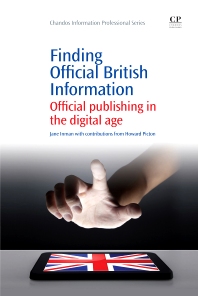Books in Library science general
Books in Library science general
- 1st Edition
- July 31, 2013
- Nancy Noe
- English
- eBook9 7 8 1 7 8 0 6 3 3 7 1 8

Creating and Maintaining an Information Literacy Instruction Program in the Twenty-First Century
- 1st Edition
- February 11, 2013
- Kelly Blessinger + 1 more
- English
- Paperback9 7 8 1 8 4 3 3 4 7 0 2 6
- eBook9 7 8 1 7 8 0 6 3 3 6 8 8

Workplace Culture in Academic Libraries
- 1st Edition
- January 29, 2013
- Stephen Mossop
- English
- eBook9 7 8 1 7 8 0 6 3 3 9 0 9

Achieving Transformational Change in Academic Libraries
- 1st Edition
- December 10, 2012
- John Azzolini
- English
- eBook9 7 8 1 7 8 0 6 3 3 7 4 9

Law Firm Librarianship
- 1st Edition
- November 6, 2012
- Valerie Matarese
- English
- Paperback9 7 8 1 8 4 3 3 4 6 6 6 1
- eBook9 7 8 1 7 8 0 6 3 3 5 0 3

Supporting Research Writing
- 1st Edition
- September 10, 2012
- Robert Campbell + 2 more
- English
- Paperback9 7 8 1 8 4 3 3 4 6 6 9 2
- eBook9 7 8 1 7 8 0 6 3 3 0 9 1

Academic and Professional Publishing
- 1st Edition
- August 6, 2012
- Susie Andretta
- English
- Paperback9 7 8 1 8 4 3 3 4 6 8 0 7
- eBook9 7 8 1 7 8 0 6 3 3 2 4 4

Ways of Experiencing Information Literacy
- 1st Edition
- February 23, 2012
- Maha Kumaran
- English
- eBook9 7 8 1 7 8 0 6 3 3 0 8 4

Leadership in Libraries
- 1st Edition
- February 23, 2012
- Petros Kostagiolas
- English
- Paperback9 7 8 1 8 4 3 3 4 6 7 8 4
- eBook9 7 8 1 7 8 0 6 3 3 1 5 2

Managing Intellectual Capital in Libraries
- 1st Edition
- December 20, 2011
- Jane Inman + 1 more
- English
- Paperback9 7 8 1 8 4 3 3 4 3 9 2 9
- eBook9 7 8 1 7 8 0 6 3 2 9 2 6
